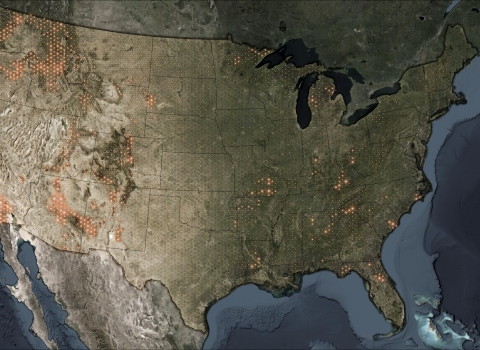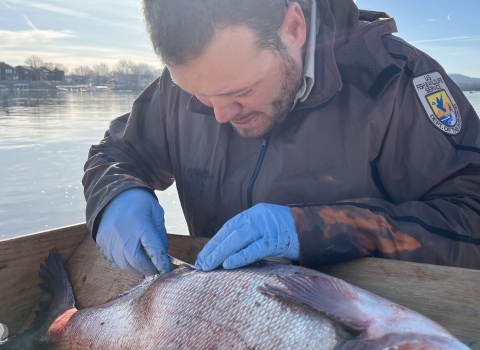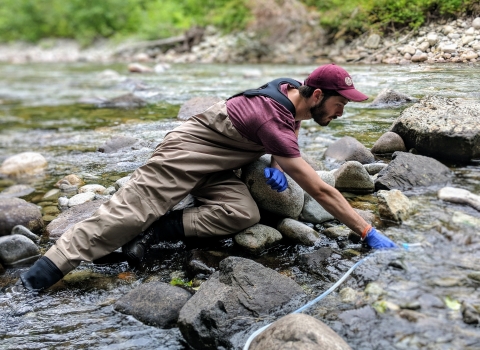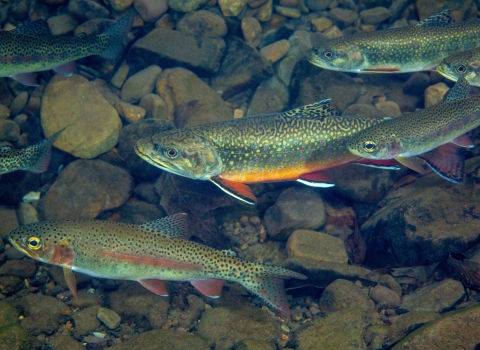Projects and Research
Read about the various projects that happen at the Midwest Fisheries Center, Whitney Genetics Lab, Fish Health Center, and Fish and Wildlife Conservation Office.
In 2023, the Data Management Branch was established at the Midwest Fisheries Center to serve the data management needs of the various program areas within the Fish and Aquatic Conservation Program in Region 3. In doing so, we are better able to meet our conservation mission by improving open access to and utility of the data we collect for the public and our conservation and management...
Understanding seasonal movements and habitat preferences of invasive species is one key to controlling them. If you want to control an invasive species, you must know where they are. To control them efficiently, you need data on their hotspots, where they live during different times of the year, and when they are most active during the day. Acoustic telemetry is one way that biologists are...
It's one of the state's most popular rivers for canoeing, kayaking, tubing, and fishing.
The Upper Iowa River offers the most public land access of all Iowa Rivers.
The Scenic River and Water Trail meanders through limestone bluffs and driftless trout streams and draws visitors from all over the country....
Across the country, scenes of thousands of freshwater mussel shells scattered on the banks and bottoms of lakes and rivers haunts scientists. For the most part these mussel die-offs are unexplained and mysterious. Pollution and contaminants are a well known cause of mortalities but in the case of these die-offs there were no contaminants found....
Management of invasive carp populations is one of the biggest conservation challenges facing the United States today. Assessing the reproductive potential of grass carp and black carp in the wild can help fisheries managers determine control methods for invasive carp species. Grass Carp and Black Carp can be important biological tools for managing closed...
This emerging technology looks for the presence of DNA from either a specific species or a group of species that has been “shed” into the environment. There are many ways that a species can leave behind DNA in an environment. They can shed skin cells,...
The National Wild Fish Health Survey provides information on the presence or absence of aquatic animal pathogens in wild fish populations to tribes, state and federal fisheries managers, the aquaculture industry, conservation groups, researchers, and the public. This information helps to better manage both hatchery and wild fish populations. ...
The La Crosse Fish Health Center offers a free and humane option for euthanizing fish that can no longer be cared for. By choosing this method, you help prevent the introduction of aquarium fish into our rivers and lakes, which is crucial for maintaining healthy ecosystems and protecting against invasive species. This service is...
The Whitney Genetics Lab and Northeast Fishery Center are partnering to utilize large-scale metabarcoding as another method in the Great Lakes Early Detection and Monitoring program. This initiative is designed to improve the efficiency of the U.S. Fish and Wildlife Service to detect aquatic invasive species early in a potential invasion.
What is Metabarcoding?Metabarcoding eDNA is a...









